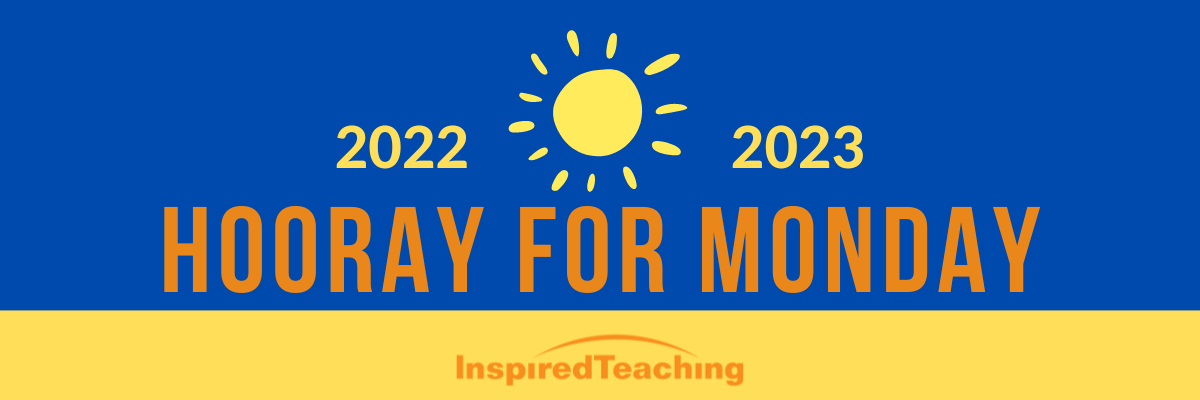November 14, 2022
By Aleta Margolis, Founder and President of Center for Inspired Teaching
Hooray for Monday is a weekly blog filled with questions, ideas, reflections, and actions we can all take to remodel the school experience for students.
You can now listen to Hooray for Monday on Spotify! Check out our podcast here.
For the past few weeks, we’ve shared the voices and stories of Inspired Teachers. These teachers are using feedback to inspire their students, giving students the gift of their full and undivided attention, and using questions to build children’s love of language.
In a recent episode of my favorite podcast Clear + Vivid, host Alan Alda described the difference between scientists who put their work out there in hopes that someone will receive it, and scientists who are truly communicators. The former exhibit a mindset of “I’m here to tell you.” The latter embrace the mindset “I’m here to excite you.”
As you reflect on your own practice, what are you here to do?

Teachers are often expected to take on the “I am here to tell you” mindset, to put the information out there and then leave it up to the students to “absorb” it, or not. But Inspired Teachers know better. When we step into the classroom, we don’t think, “I am here to tell you.” We think, “I am here to engage you. I am here to inspire you.”
The educators we’ve profiled these past few weeks demonstrate what it looks like to engage and inspire. Principal Hakim Johnson offers tangible feedback that teaches students far more than any grade or test score ever could. Montessori teacher Kulsum Omer uses focused observation to fuel students’ joy in each new discovery. And preschool teacher Lacey Head builds rich language skills in her students by shifting her questions from the expected (“What’s your favorite color?”) to the meaningful (“What colors do you love?”).
What will you do this week, and in the weeks ahead, to go beyond telling? How will you engage your students?
The resources in this week’s issue are here to help you answer that question. And if you’d like to share your answers with us, as always, we welcome your stories.
Wishing you a joyful week of engaging in learning alongside your students.
3 Ways to Engage Learners

1. Start at the beginning.
From the minute your students enter the classroom, you create a space that focuses on telling or engaging. What happens as students cross the threshold? Do you ask a question when class begins, or do you administer an assignment? This resource offers 4 ways to welcome students in the door that tap their curiosity and engage their minds.
2. Use the senses.
All of our senses are working all the time. These activities heighten our sensory awareness. The more learners notice and understand how their body receives and responds to stimuli, the more self-awareness and control they will cultivate. These activities invite a pause, a deep breath, and a grounding – all of which can be quite engaging.
3. Find the zone of proximal development.
Challenging students to spend time in their zones of proximal development means helping them identify their capabilities and competencies, and then stepping just far enough outside of their comfort zones to stretch toward what might be possible. That’s a space of excitement, inspiration, and yes, engagement!


